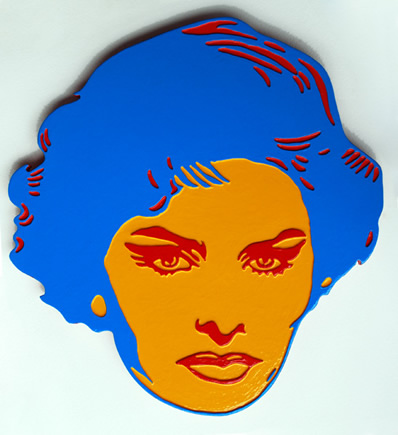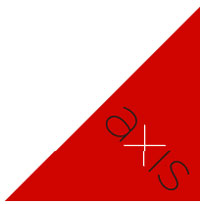
Axis Contemporary Art Statement
Representing the energy, imagination and creativity of Canadian and International artists.
 What is your artwork about (concept, focus, themes, intent)?
What is your artwork about (concept, focus, themes, intent)?
At this point my art practice is a big playpen with certain parameters: the medium and technique of woodcut cherry, walnut, and century-old Douglas fir, the portrait genre, historical photographic records (especially from the Glenbow archives), circus sideshow references, and about fifty years of popular culture from the 1920s (silent film cowboys like Hoot Gibson and Tom Mix) to the 1970s iconic gender archetypes such as Sophia Loren and Steve McQueen.
What matters to you most about the work that you do?
I am interested in the liveliness of a line. There is no room for error in this medium, so the first thing that matters to me is getting it right, which means five hundred to five thousand perfectly cut lines which vibrate like plucked strings. I judge success by whether the eye is free to play over the woodcut surface without getting stuck in a single miss-cut groove.
Do you feel you need to position your work within the context of art history and if so what’s your take on that?
No, I don’t think about that, but I do have an affinity with cloissonists everywhere.
Is there a trigger or a starting point for each piece?
The wood itself is like a panther in the house. Also I spend days on end looking through thousands of photographs in treasure-hunting mode. When I find a reference that has an imperative–it absolutely must be interpreted in woodcut–I feel like fifteen Pygmy Marmosets, it is quite exciting. I have collections of references that wait impatiently in a queue.
What informs your artwork or what are your influences?
I am interested in personas and archetypes from popular culture: cowboys, gangsters, tough guys, femme fatales. I’ve also recently been fascinated by the cowgirl trick riders and honky-tonkin' cowboys of the 1940s and 50s, with their somewhat more campy props and signifiers.
How has your work evolved over the last five years?
I cut my teeth making about six hundred woodcuts in salvaged plywood, then moved on to pine, and it is only in the past year that I have worked in cherry, walnut, and Douglas fir. The plywood and pine woodcuts tended to be more Pop, kitsch, and low-brow, painted with glossy candy-coloured enamels, whereas the century-old Douglas fir, for example, has so much intrinsic gravitas that the tone has completely changed. The new woodcuts are less garish, more rustic, and have more physical presence.
What is currently the central motivation for or conceptual concern in your work?
Recently my concerns are more physical than conceptual; all of my challenges have to do with finding the exquisite translation of information into a block of wood. I am a compulsive graphic delineator, and everything that crosses my path passes through a filter to determine whether it needs to be a woodcut; I have a search-object of woodcut criteria implanted in my retinas.
Artist Statement
I have been experimenting with figurative woodcuts for almost twenty years since being introduced to the medium by printmakers at Alberta College of Art and Design. Recently I have been wrestling with a new challenge: five truckloads of century-old rough Douglas fir beams from the ENCORP restoration of the Hull Block and Alberta Block on 8 Ave and 1 St SW in downtown Calgary. This wood is very interesting in its history, and also in that it is oddly shaped, there are holes and knots and gouges, and rusty nails sticking out the sides, so the material itself is ornery, unlike traditional woodcut material such as cherry or walnut. To find suitably rustic and rugged subjects I have been referencing popular culture tough guy personas from 1920's silent film cowboys Hoot Gibson and Tom Mix, to 1960's and 70's characters such as Harry Calahan and Frank Bullitt. I’ve been watching classic TV westerns: Wagon Train, Bat Masterson, Jim Bowie, Annie Oakley, Roy Rogers, and The Rifleman, and listening to a lot of Roger Miller. I have also been referencing the Glenbow archives for horse rustlers, bootleggers, informants, homesteaders, loiterers and turn-of-the-century RCMP. These woodcuts are the ¿Quién es más macho? series.
Cowgirl trickriders and cowboy yodelers in their spectacular ensembles from the 1940s led to the series Honky-Tonkin, Honey, Baby. Inspired by a trip to Coney Island, I have also recently been exploring vintage circus culture, and a new series of sideshow portraits is in production, including Zip the Pinhead and JoJo the Dog-faced Boy.
There is a series of iconic gender archetypes, Miss Pulchritude and Mister Muscles, which includes work such as Butter My Butt and Call Me Biscuit (I find that Sophia Loren holds her own anywhere) and The Informant (the same can be said for Steve McQueen).
Original Article HERE
- Category:: News | Exhibitions
